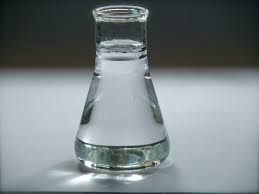
Glycerine is a colourless, odourless and vicious liquid, widely used in pharmaceutical and cosmetic industries. It has three hydroxyl groups that are required for its solubility in water and its hygroscopic nature. It is sweet in taste and has low toxicity. It is used as an element in cosmetics, hair products, medicines, and in several other applications.
| Glycerine Technical 99.5% | |
| Appearance | Clear |
| Assay, minimum wt.% | >99.5 |
| Diethylene Glycol, maximum wt% | <0.1 |
| Water, maximum wt% | <0.9 |
| Total Impurities, maximum wt% | <1.0 |
| Color, APHA | <15 |
| FTIR Scan | Positive ID |
| Identification, GC | Pass |
| Specific Gravity, apparent | 1.26 |
| Residue on Ignition, ppm | <100 |
| FA / Esters, maximum ml | <1.0 |
| Chlorides, maximum ppm | <20 |
| Chlorinated Compounds, maximum ppm | <30 |
| Sulfate, maximum ppm | <150 |
| Heavy Metals, maximum ppm | <5 |
| Glycerine USP 99.5% | |
| Appearance | Clear |
| Odor | Odorless |
| Color | To Pass The Test |
| % Glycerol by Mass (MLS of 0.5 N NaOH) | 99.5 min |
| Fatty Acid and Esters (MLS of 0.5 N NaOH) | 1.0 Max |
| % Chloride | 0.001 Max |
| % Sulphate | 0.002 Max |
| % Chlorinated Compound | 0.003 Max |
| % Moisture | 0.5 |
| Heavy metals PPM | 5.0 Max |
| % Residue on Ignition | 0.01 Max |
| Specific gravity @ 25° C | 1.249 Min |
| Organic Volatile Impurities | To Pass Method IV (467) |
| Identification | To Meet (USP30) |
| A) Total Impurities (Chromatographic) Including Diethylene Glycol | 1 % Max |
| B) Individual Impurities (Chromatographic) | 0.1 % Max |